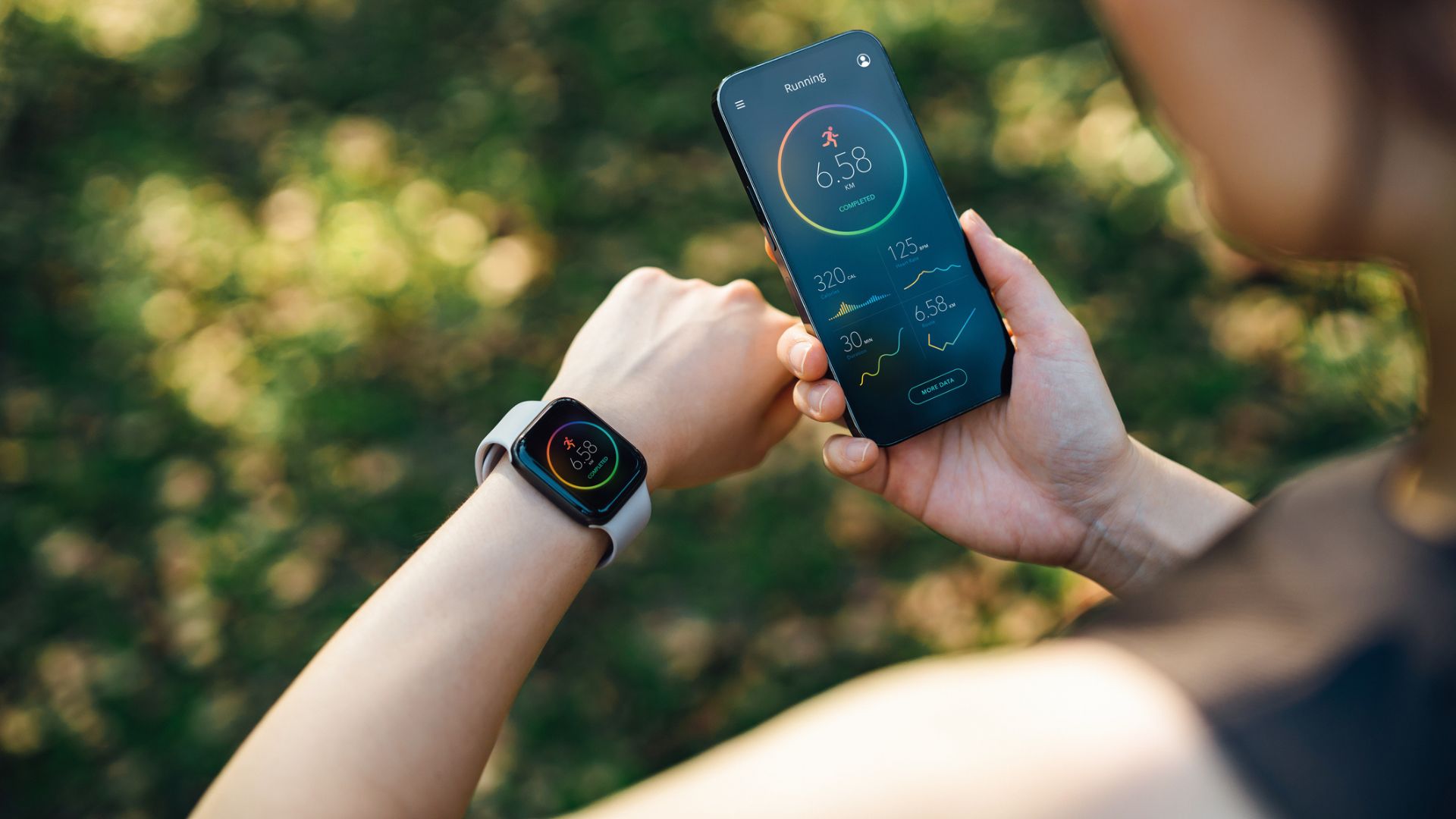How to calculate the number of calories burned walking
The number of calories burned walking may be more than you might think


You may be wondering how many calories are burned walking if you're looking to revamp your workout routine this year. There are so many benefits of walking for the body outside of its calorie-burning effect, but if you are looking to lose weight, then this is something to consider.
When it comes to weight loss, it's all about calories in versus calories out. To lose any weight, you'll need to start burning more calories every day than you consume, and exercise can certainly help with this. Thankfully, there's now a super simple formula that can help you calculate the approximate number of calories burned walking a little more accurately. And importantly, it takes into consideration your height, weight, and the pace at which you walk.
If you've already got a pair of the best walking shoes and you're considering taking up walking as a workout, you're halfway there. This simple formula will help you get started with walking for weight loss, provided you also consider making a few changes to your diet where necessary. As always, consult your doctor before making any major changes to your lifestyle.
How many calories can I burn while walking?
You can expect to burn around 100 to 300 calories during a 30-minute walk, according to Dr Vikash Sharma, a physical therapy specialist. "If you are climbing hills, walking at a faster pace, or using intervals in your walking routine, then you are sure to increase the number of calories you burn," he explains, while walking on level ground at a gentler pace will mean you burn fewer calories in the same amount of time.
As suggested by the physical therapist, walking 30 minutes a day could lead to a total maximum burn of 2,100 calories over seven days, which would put you well on your way to losing a pound a week provided that you complement your walking with a calorie deficit for weight loss with dietary changes.
The formula for how many calories you'll burn walking was developed by Southern Methodist University in 2016 after researchers analyzed multiple data sets published over the last 50 years. They discovered that standard calculations underestimated calorie burn in 97% of cases, after figuring out that your height can have more of an impact than previously thought.
“The taller you are, the less energy it takes to walk a mile,” says Peter Weyand, the study’s co-author, who helped develop the new formula. “This means the rate at which you burn calories while walking at the same speed is slower compared with someone shorter.”
Sign up for the woman&home newsletter
Sign up to our free daily email for the latest royal and entertainment news, interesting opinion, expert advice on styling and beauty trends, and no-nonsense guides to the health and wellness questions you want answered.
The formula the researchers created measures the number of calories burned per minute during level walking and it works for all ages. What's more, it takes into consideration your weight, height, and the pace at which you walk. To use it, you'll need to know your walking speed. Not sure how to figure it out? Download one of the best fitness apps like Nike Run Club or Strava, which will record your walking pace via your smartphone.
How do I calculate the number of calories burned walking?
Here’s the formula you need to know:
Calories burned per minute = (0.035 X body weight in kg) + ((Velocity in m/s ^ 2) / Height in m)) X (0.029) X (body weight in kg)
Don't worry, it’s not as complicated as it looks. Here's an example: Let’s say you’re 1.6m tall, weigh 60kg and typically walk at 1.4 metres per second (that's about 3.1mph).
- Multiply your body weight in kilograms by 0.035. Eg. 0.035 x 60 = 2.1
- Square your velocity (or speed) in metres per second by multiplying it by itself. Eg. 1.4 x 1.4 = 1.96
- Divide the result by your height in metres. Eg.1.96 ÷ 1.6 = 1.225
- Add your first answer and your second answer E.g. 2.1 + 1.225 = 3.325.
- Multiply the result by 0.029. E.g. 3.325 x 0.029 = 0.096425
- Multiply the result by your body weight. E.g. 0.096425 x 60 = 5.7855
This means that someone of your height and weight will typically burn 5.8 calories per minute when walking on a level surface at a speed of 1.4m/s or 3.1mph. A standard formula accounting for weight alone would give you an estimated figure of 4 calories burned per minute.

Other ways to track calories burned walking
Another way to track the number of calories you burn while walking is to pick up a fitness tracker, like one of the best Fitbits. When setting up your device, you'll have to record factors that contribute to how many calories you'll burn in any given exercise, such as gender, height, and weight. The tracker will then record how fast you're walking during your workout, plus how far you've traveled, offering a roundup of how many calories you've burned while exercising. No maths required.
Unfortunately, the above formula can't account for gradients, unlike one of the many Fitbit types and trackers out there, or fitness levels. However, the scientists claim that it's much more accurate than many other algorithms used by general pieces of equipment like treadmills, as these won't take your details into account.
However, you could also use a calorie burn calculator online instead of doing the maths yourself. There are many freely available on the internet. The one from Omni Calculator is one of the best as it also takes personal details into account when doing the calculations.
How to increase the number of calories burned walking
1. Interval training
As noted by Dr Sharma, incorporating some interval training will be essential for increasing the number of calories burned walking. Interval training, like HIIT treadmill workouts, typically involves walking at different speeds or inclines during one session, alternating between easier and harder periods.
Plus, research from Hacettepe University shows that interval training can offer so many of the other benefits of walking, such as increased cardiovascular fitness and stamina, increased strength, and stress relief.
2. Hill walking
Ever heard of the 12-3-30 workout? The viral workout sensation is an example of hill walking on a treadmill, just one of the ways to increase the number of calories you burn during exercise.
"Walking on an incline is a great way to burn more calories during your workout," says the sports therapist. "In a similar way to resistance training with weights, walking up a hill or on an incline treadmill offers resistance against your body as you have to work against the force of your body weight. Your muscles have to work harder than normal to move your body forward. This hard work uses more muscles, such as the glute, quads, and calves, and the more muscles used the more calories you burn typically."
3. Try Nordic walking
Walking briskly with poles to minimize impact on the joints while engaging the muscles in the torso, otherwise known as Nordic walking, is so great for burning calories that several studies have discussed it. According to research from the University of Trento and the University of Salzburg, it's thought that an hour of moderate Nordic walking can burn up to 400 calories, with more calories burned during higher-intensity walks.
"Much like hill training, Nordic walking engages more of the muscles in the body," says Dr Sharma. "Typically, you use more of the muscles in your arms, shoulders, back, and chest, as well as your ab muscles doing this type of walking."
4. Incorporate some running into your walking
When picking between walking vs running, there's no doubt that running is a much more efficient exercise. "Running is much more intense than walking, so you'll naturally burn more calories as your body has to work harder to do the exercise," says Dr Sharma. "However, walking will always be a better pick for those with any joint, bone, or mobility issues, due to the impact that running can have on these areas."
If you're looking to learn how to start running, pick a program from one of the best workout apps or follow a couch to 5k program.
5. Do an activity you enjoy
Walking faster than a stroll, like power walking, burns plenty of calories if you do it for an hour or so, more than enough to help you lose weight if that's your goal. However, the most effective workout is going to be the one you enjoy the most as you're more likely to do it.
There are plenty of other activities other than cardio that contribute to healthy weight loss. For example, strength training is a great workout for those who want to lose weight as it helps the body to achieve a calorie deficit and maintain muscle mass at the same time. According to research by Sacred Heart University, both weight and HIIT training also helps the body to burn calories 24 hours after the workout as well.
So, if you'd rather go to the gym or do something other than pick up a pair of walking poles, that'll always be the better (and more sustainable option).
Ciara McGinley is a meditation practitioner and health journalist. She qualified as a meditation teacher with the British School of Meditation in 2020 and is the founder of Finding Quiet, a series of classes, workshops and retreats that combine meditation practices and mindfulness techniques to make mindful living realistic in an always-switched-on modern world. She is all about bettering that mind-body connection but believes wellness looks different to everyone.
Ciara is also the former Health Channel Editor at woman&home and has covered all things health and wellbeing for years, from fitness to sleep to relationships.
-
 All the lessons we've learned from Professor Tim Spector on optimising your health and wellbeing
All the lessons we've learned from Professor Tim Spector on optimising your health and wellbeingIf anyone's qualified to give us lessons on how to eat better, it's Professor Tim Spector - and these are his best lessons
By Grace Walsh Published
-
 How to charm your in-laws: the ultimate guide to keeping the peace
How to charm your in-laws: the ultimate guide to keeping the peaceDiscover how to strengthen your in-law relationships, one thoughtful gesture at a time
By Natalie Denton Published